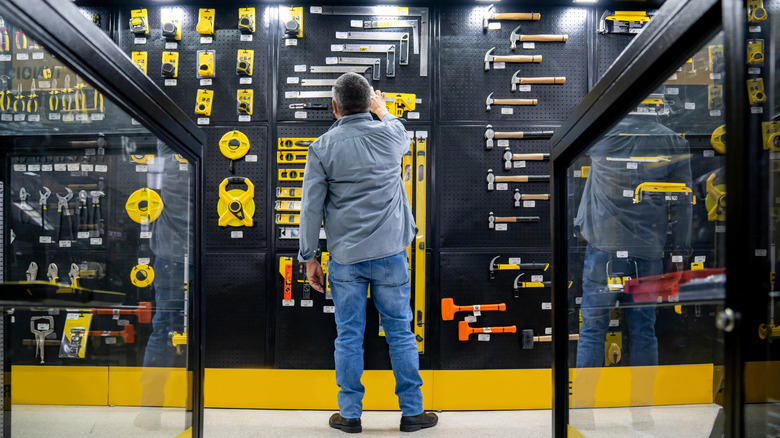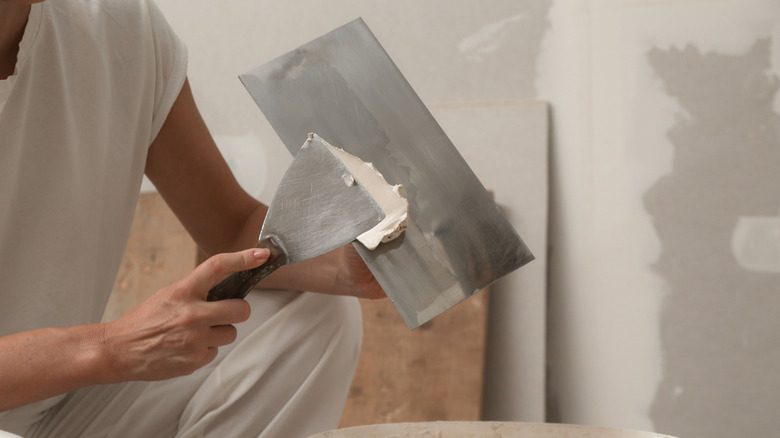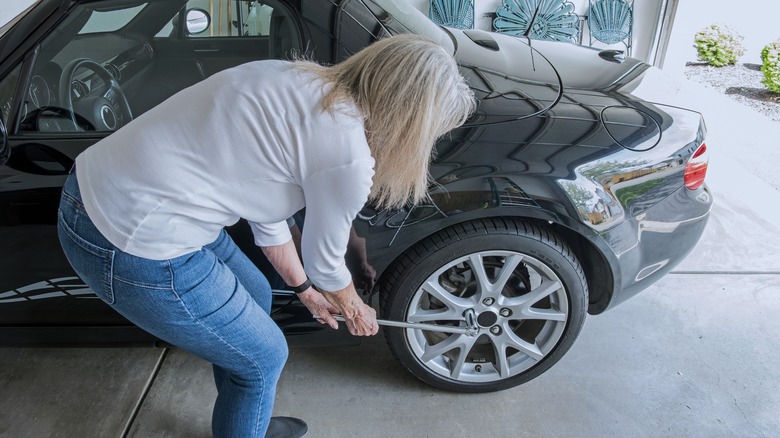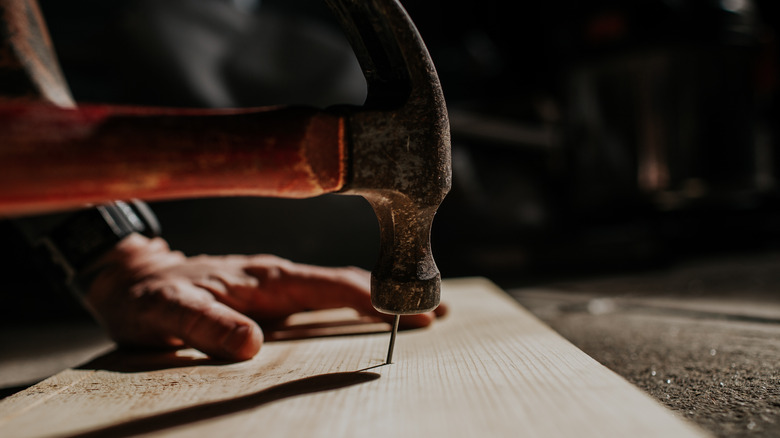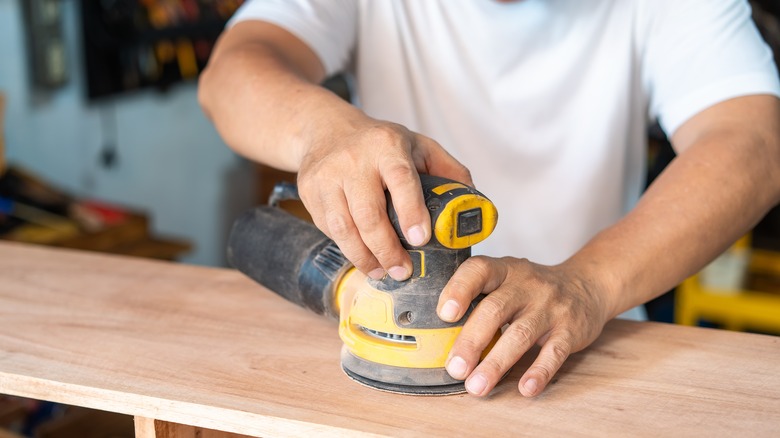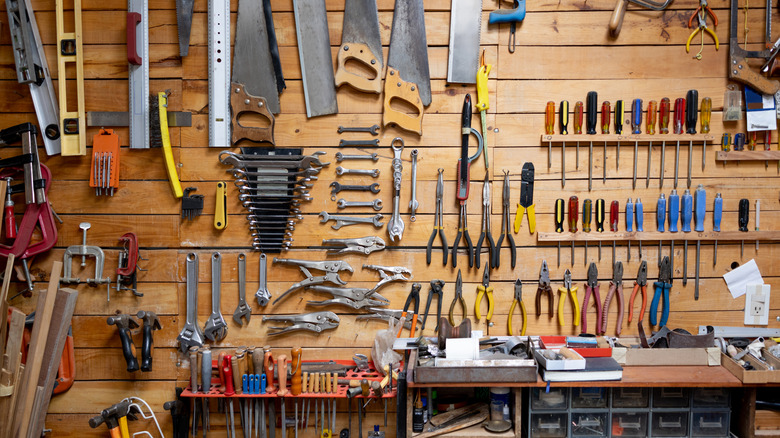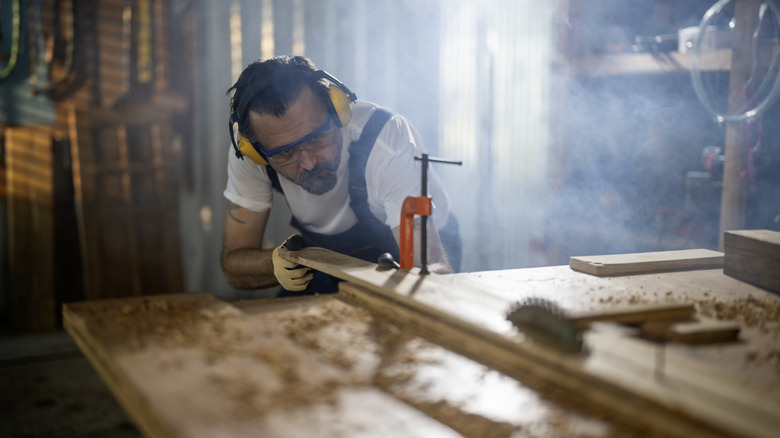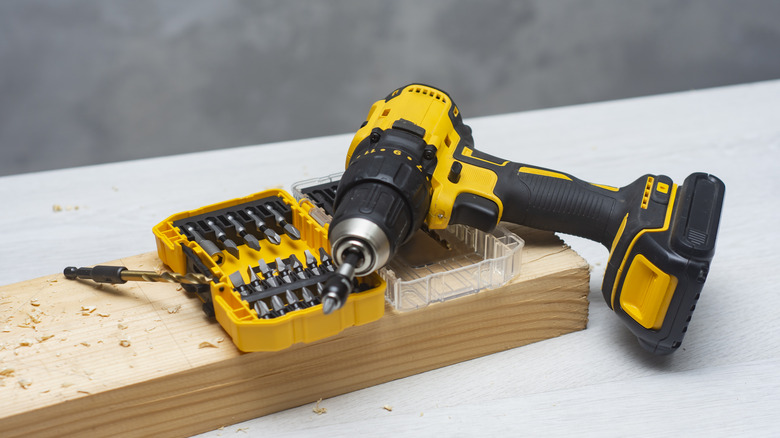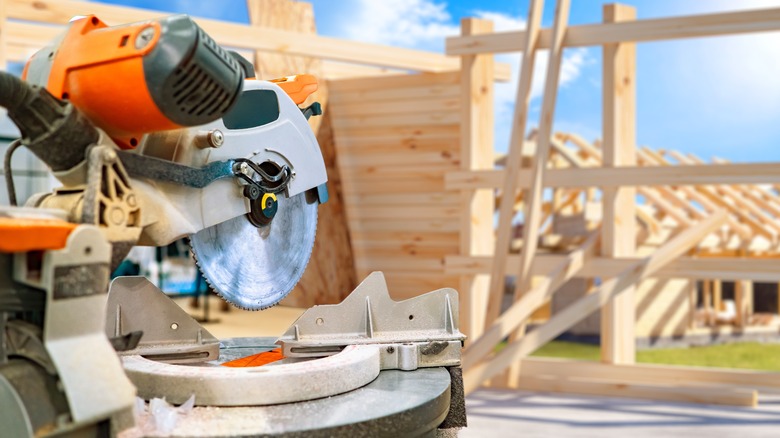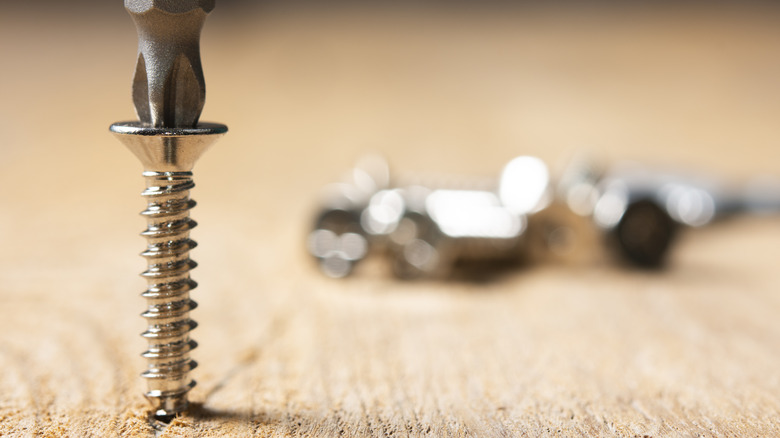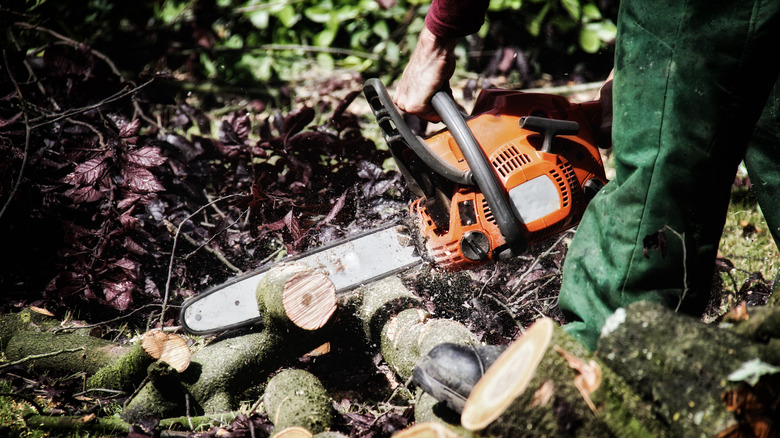5 Tools That Are Fine To Buy Cheap (And 5 To Avoid)
We may receive a commission on purchases made from links.
The inevitable tool buying cycle that users regularly go through is one with plenty of decision trees and diverging paths. There's the debate over whether a power tool or hand tool solution will best fit any particular need, and then there's the obvious exploration across major tool brands. Tool users often have one or more preferences in this regard. However, there's one more area that can significantly cloud your decision when searching for a new tool to add to your collection: pricing. Pricing can be a critical determining factor in buying or skipping any tool you might be looking at. Comparison shopping for the same product or even evaluating differences across two similar brands offers a streamlined evaluation that can be clarified with product details, but there's often more to this than meets the eye.
A wide range of important tools can be found for dirt-cheap prices, with expensive build parameters, or from luxury brands. What's really the difference here, though? Moreover, buyers will often focus on the additional value that a more expensive product purportedly brings to the table. In many cases, added features for an additional cost simply don't mesh well with buyers' particular needs. This creates a landscape in which some tools should usually be purchased at discounted rates while others demand something closer to a splurge purchase in order to extract value from the equipment.
These are five tool types that should be purchased on the cheap and five others that you'll want to avoid when looking at budget-friendly solutions.
Save on utility knives
A great starting point to explore tools and accessories that you should look for on the low end of the price spectrum centers on consumables. Mechanics, workers, and DIY renovators will all go through plenty of consumables tackling projects in their shop or around the house. Latex gloves, utility knives and their interchangeable blades, putty knives and scraping tools, and many other low-cost consumables should often be sourced for the lowest cost you can find.
In many cases, there are more expensive options available that might bring improved functionality to the table. For instance, utility knives come in all shapes and sizes and can feature spring-loaded opening mechanisms or unique blade-latching infrastructure. This might be useful for professionals who will rely on this specific tool frequently throughout their day. For most people, there's no need to overextend for a luxury function that doesn't drastically improve the implementation for the user's specific needs. Tools and accessories like this are designed to be used and discarded. Trowels and putty knives are a great example.
You can splurge for something like a Marshalltown trowel and pay $50 or more for a standard brick trowel, or buy a basic alternative for a fraction of the price (an OX Trade trowel is listed on Amazon for $7, for example).
Save on breaker bars and prying tools
Breaker bars are an interesting entry here. Socket sets and ratchets are generally tools that you'll want to buy with quality in mind. However, the breaker bar that might complete a set isn't strictly necessary. In fact, splurging on the socket set but going cheap on the breaker bar to complete your collection is frequently the best approach. The fact is that this additional socket set accessory offers essentially the same outcome, regardless of whether you buy it from an expensive manufacturer like Snap-On or MAC Tools or you find a cheap alternative at the local hardware store or online.
Sourcing breaker bars at a discount is a great way to preserve your project balance. Breaker bars aren't a tool that you'll use on a consistent basis because they only come out of the toolbox when all else fails. The bar offers a lengthy extension to provide a major jump in your torque production capability. Even cheap bars are made with high-strength steel, and you'll be hard-pressed to find one that simply fails on you when you call upon it. The same can be said for prying tools like cat's paws or demolition bars. The parameters of these kinds of tools simply demand high strength, and so splurging on them is often a waste of money.
Save on hammers (in most cases)
A hammer is another tool that you won't necessarily need to lash out the cash on. There is a wide range of hammer types in the marketplace , and they provide specialized striking functionality for all types of jobs. Ball peen hammers are frequently found in metalworking shops and in the hands of woodworkers alike. Dead blow hammers are a frequent find in the collections of auto mechanics. All of these striking solutions can be found for a reasonable price, so there's really no need to buy a fancy or expensive hammer. Functionally, there's little difference between an expensive Snap-On dead blow hammer (a 32-ouncer will run you $102.50) and a budget-friendly alternative from the likes of Harbor Freight (like the Pittsburgh equivalent listed at $10).
One exception to this rule can be found in framing hammers. Buying a cheap framing hammer might be the best approach to this subset of the hammer marketplace for most, but professional framers who will be swinging this hand tool countless times every day can extract significant value from a premium model. Stiletto is perhaps the most venerated toolmaker in the hammer sphere. Some of the brand's most prominent framing hammers feature titanium construction. Titanium delivers extreme strength in a light package, allowing framers to opt for minimal weight without sacrificing the striking force they produce. This premium product will run you at least $100, but this elevated cost can be worth it for specialized users.
Save on random orbit sander
Unless you opt for a top-of-the-line solution, you'll almost certainly have to replace your sander sooner than expected. At the very least, you may find that a replacement for the connection head is required. The very nature of a sanding tool's job is to strip away fine dust particles from a workpiece's surface. The result is a tool that's constantly in contact with debris. Some extremely high-end random orbit sanders might introduce quality ingress protection into the tool's interior. However, the vast majority of sanders feature relatively basic overall setups.
If you're working with battery-operated power tools rather than corded solutions, you'll have good reason to invest in a particular brand. However, if you're not tied to a specific brand or you simply want corded power in your toolbox, hunting for bargain solutions is often your best approach. Just about every random orbit sander on the market will perform roughly the same job. However, it's worth noting that the sandpaper discs you use alongside the power tool can make a significant difference. Opting for the cheapest discs available will make the grit clogged faster and you may even experience a worse finished product on your project.
Save on tool storage solutions
Many people working across numerous hobby segments and professional tool usage spaces will opt to make their own tool storage gear. Building your workbench can act as a great starting point in the woodworking journey, but it's also a practical solution that allows you to customize your work-holding gear while saving money at the same time. In many cases, building your own workbench, tool wall, or storage shelves will cost less than buying something at your local hardware store. Often, building your own equipment isn't actually as time-consuming as it might seem.
Building your own gear can be extremely satisfying. Working out the details and dimensions of personalized equipment that helps you get the job done isn't just a great way to take increased ownership of your space. Pursuing this course gives you more room in the budget to tackle the kinds of projects you want to work on, too. With a lighter expense load surrounding your organizational needs, you can direct more of your budget toward additional tools that open up new possibilities or better materials to amplify the finished products you put out.
Spend on protective equipment
Moving away from tools that should be targeted with budget-friendly approaches, you should always veer toward splurge territory for several essential pieces of equipment. One of the most obvious purchases in this category involves protective equipment. You can absolutely find gloves, ear protection, and eyewear at cut-rate pricing. However, there's a reason why these kinds of equipment constantly show up on the premium side in professional work settings. Pros understand that high quality protective gear can be the difference maker between adverse effects and even injury, and a safe working environment that helps them get back home at the end of every day.
Spending a little more money on better eyewear, masks and, additional respirator accessories, and ear protection will keep you safer in the workshop. Buying better gear in this area might take away from your ability to purchase additional materials, but over the long run, there's absolutely no denying the impact that a good set of earmuffs and quality cut-resistant gloves can provide. Better impact resistance in your eyewear and a tighter fit around your ears can make all the difference in your long-term health, and your future self will thank you for making this trade every time.
Spend on cordless drills
Cordless drills are another tool found across a wide array of build parameters and overall quality. There's often not much wrong with a budget drill, and tackling some light-duty home improvement projects with a cheap unit can be a great way to save money while still getting the job done relatively efficiently (I can confidently offer this one up from experience). With that being said, the best cordless drills don't just feature improved power or expanded battery usage efficiency. With a cordless drill, your money is buying a feature-rich experience that doesn't expand upon the basic parameters of drilling but rather transforms them.
A basic drill will offer light high-end torque ratings and minimal adjustability in the output settings. This might be fine for some jobs, but anything beyond a basic screw-in often requires increased functionality. Even tackling a basic IKEA bookshelf build can benefit from a more versatile drill. The ability to shift effectively between low torque output and higher power production allows you to dial in the precision required to prevent shredding the chipboard at times and stripping the screwheads in other areas of the build. The best drills on the market tend to feature hammer action inclusions, numerous gear settings for speed adjustments, and a wider range of torque settings. With a better cordless drill, you'll also move into the territory of brushless motors. Brushless technology offers better tool longevity and increased power in many instances.
Spend on saws and replacement saw blades
The better your saw, the cleaner your cuts will be. There's just no getting around this fact. A larger saw blade allows you to cut larger stock, and with a greater volume of teeth or an increase in the tooth density that tends to follow an uptick in price, you can often expect cleaner slices as well. More expensive saws feature improved functionality before even considering the blade, though, as is to be expected. A more expensive miter saw, for instance, will often deliver sliding capabilities for smoother cut lines, and they often add in additional positive stops, improved measurement and accuracy tools, and much more. Similar trends can be found in jigsaws, table saws, circular saws, and beyond. The more you spend, the better your cutting experience will be. Unlike some other tool categories, better cut functionality is something that translates into more than just a reduction in stress and effort while using the tool directly, it delivers an improvement to your workflow from start to finish.
It's also worth noting that when purchasing replacement blades for any kind of saw you might use, opting for the premium gear can also be tremendously valuable. More expensive saw blades often deliver coated tips that improve durability and cutting capabilities. You'll also find blades that are thinner among the premium catalog. This leaves a smaller kerf to work with, allowing you to dial in even more precision to your cutting tasks.
Spend on screwdrivers and drill bits
Even though many consumable accessories are included in a purchase that you should try to keep contained in low-cost items, this isn't always the case. The truth is that you'll benefit greatly from utilizing a few strategic upgrades in this area. Drill bits and screwdriver bits are one of these purchases that often benefit from a bit of extra focus.
This isn't to say that all drill bit purchases should be done at a premium price point. There will also be times when a regular, run-of-the-mill drilling or screwdriving solution does the job perfectly well. Many people will therefore want to have a variety of options at their disposal. Upgraded bits come into play in specialty and heavy duty drilling and fastening applications. Titanium or diamond-coated bits hold up to high-intensity demands with greater durability. This gives them a longer shelf life to support more of your project needs. Many upgraded bits also feature better waste removal and gripping functionality. The result is a screwdriver bit that will hold tighter into the grooves of a screw head and drilling bits that reduce heating speeds to deliver better cutting precision across material types.
Spend on chainsaws (of all sizes)
Chainsaws are another tool that buyers will frequently want to seek upgrades for when making a purchase. A chainsaw is a heavy-duty cutting solution that can be used for a wide range of applications. Even if you're looking for a small variant that will only be servicing your lawn as a light duty landscaping tool rather than in support of major tree felling efforts or substantial firewood preparation, this same advice remains viable. As is the case with other saws, chainsaws introduce additional features into the mix as you move up the scale of "premium-ness" and when exploring chainsaw brands in the upper echelon.
Premium chainsaws feature starting mechanisms that are easier to operate. They often introduce automatic oiling support; precise chain tensioning and advanced bar settings also come into play with improved models. There are a number of "quality of life" reasons to opt for an improved tool. However, one of the most important reasons to go this route revolves around safety. Most high-end chainsaws feature kickback defense inclusions. Automatic braking, shut off support, and other safety features help prevent the chainsaw from injuring its user. Both improvement to the power output and these additional safety features combined to deliver more consistent cutting power and a minimized potential for bind ups.
This makes cheap chainsaws more dangerous to operate, and the problem only compounds in the hands of an inexperienced user who may have bought cheap because it's their first tool in the category.
